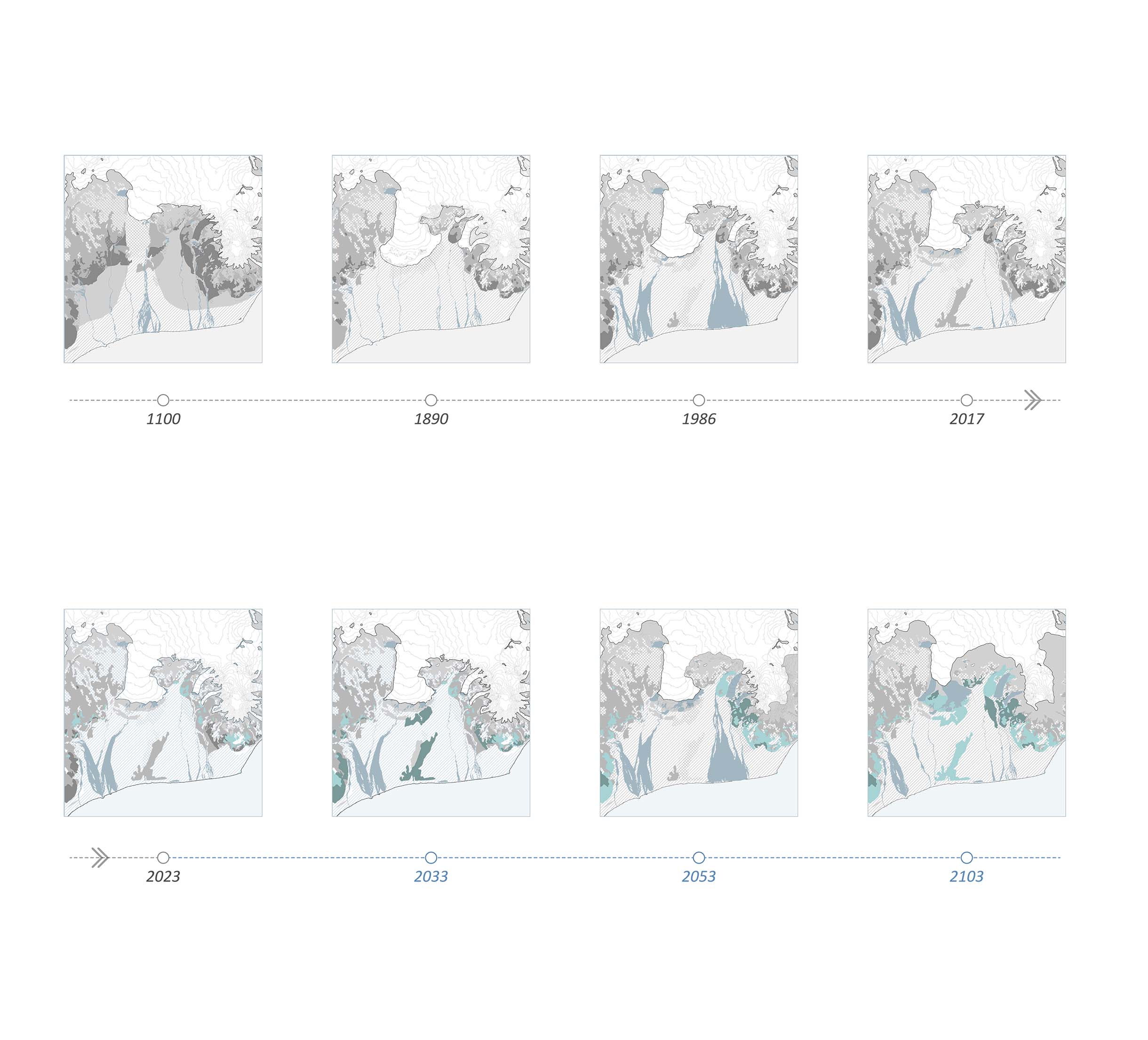The design aims to establish a post-glacial landscape park in Skeiðarársandur to protect human and more than human from potential glacial outburst flood, developing ecological value of the region and creating a memorial landscape along the floodplain for future cultural development.
Not only the glacial landscape is vanishing, but also the natural disaster, glacial outburst flood, will disappear. The site is located in the junction between Gígjukvísl river and highway. The site could be understood as the only connection between human and nature along this barren floodplain.
The design firstly creates an emergency design proposal dealing with the possible glacial outburst flood for human and more-than human in the “place of protection”. The design proposes several shelters using the materials from the remains of destroyed road. Also, it provides a safe space for flood observatory. The hiking trials are reorganised along the journey with several shelters. High terrain close to the river used to protect the bridge, while it is now preserving the ecological haven.
The post-glacial landscape park focuses on not only alleviating the side-effects of the disastrous glacial flood, but also the culture aspect. Several monuments and cultural elements, which together compose the place of memory, will be built based on the existing site condition. It is predictable that the site will face erosion and other challenges. The future destroyed bridge will be transformed to flood monuments. Other cultural interventions will be conducted in response to the challenges facing the Anthropocene.





























